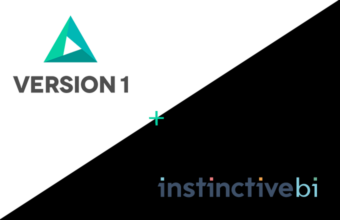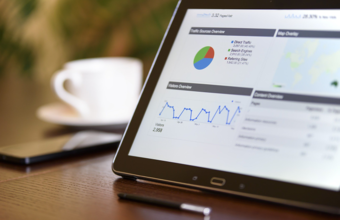How to Communicate with Data
“Where’s the data?”
If you’ve ever been hit with this question when trying to persuade a colleague, manager or client to invest in your idea, then you’ll know the significant role that data analysis plays in enabling an organisation to make faster, well-informed decisions. However, how do we convey the right story or message with data? How do we make an impact on our audience and shine a light on the key messages we know will make a difference to our business? While each story may be different, here are a few tips on how to unlock the power of your data through effective communication:
Start with a question
When diving into data, it’s crucial to have a starting point. What question do you want to answer? If you’re trying to highlight areas for improvement within your company’s supply chain, it could be: “What stage in our supply chain takes the longest time and why?”. If you’re pitching to a client, it might be: “How can your business benefit from our services?”. Regardless of what kind of data you’re analysing, make sure you’re clear on why you’re analysing the data. When communicating with your audience, it’s helpful for them to know where and why you started.
Develop your hypothesis
The aim of your analysis should be to establish a hypothesis. It should be clear, of meaningful value to your organisation, and ideally, highlight something which can be improved or capitalised on to make gains for the business. For example, with an initial question of: “What stage in our supply chain takes the longest time and why?”, the hypothesis could turn out as “A two-day delay in the packaging process is caused by Supplier X being late to deliver material on 70 per cent of all orders.” Once you have a solid hypothesis, be clear on what message that hypothesis provides. Through each step, always ask: “Is what I’m communicating relevant to my main message?”. If the answer is no, you don’t need it as part of your story.
Don’t “hypothesis shop”
One of the biggest pitfalls for data analysts is choosing a story or hypothesis and doing everything to make the data fit that hypothesis – that is, picking and choosing what data to share because it tells a “nice story”. This is bad practice and will inevitably result in poor decisions arising from the data you’ve shared. Instead, make sure your hypothesis fits your data. The “null hypothesis” approach is best practice – if you think you have a solid hypothesis, do what you can to disprove that hypothesis using all relevant data. If you cannot disprove your hypothesis, you’ll know you have a valuable story to tell. By going through the process of challenging your own hypothesis, you’ll also be well-equipped to deal with any questions which may arise when communicating your story to an audience.
Use your journey to tell the story
The journey from your initial question to developing your hypothesis is as essential for your audience as it is for you. Bring your audience through each relevant thought process and discovery you found along your journey. It will make it easier for your audience to interpret your findings and will make them more comfortable with the conclusions you’ve come to. Your journey is what makes up most of the story.
Be clear and concise
When telling the story, be as concise as possible. When presenting your data, each slide should ideally have one clear message. A helpful technique is to put that message in your title. For example, rather than titling a slide: ‘Chart showing Lateness of Orders’, instead use: ‘Supplier X is late on 70 per cent of Orders’. This way, the audience knows what you’re trying to convey. Annotate key data points only and avoid sharing any unnecessary information.
Know your audience
A good conclusion for your story is how the data you turned into insights data can benefit the business. This is what your audience will be most interested in.
You’ve gone through the process of how you’ve made the discovery, but what value is it to anyone? A lot of the time, you may have to base the benefits on assumptions; when doing this, you should make sure you are clear on the assumptions you’ve made.
For example: “Assuming Supplier X reaches 100 percent on time for all deliveries”. Next, you could relate this to the additional product which could be delivered to customers on an annual basis, and, most importantly, the additional annual revenue which could be generated.
Turning data into an insightful story is key to instilling confidence in your audience on the significant benefits which can be realised by driving out those important insights.
Without data, decision-making is blind. With the right data, you can unlock insights into your business and propel your organisation into a data-driven future.
Data at Version 1
At Version 1 we combine digital, cloud and enterprise application expertise with our data science and analytics capability to articulate a pragmatic roadmap for success. With our analytic accelerators and frameworks, we reduce data gathering and analysis time so customers can focus on their data insights.



